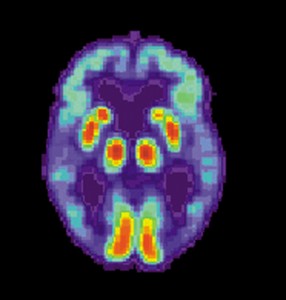SATURDAY, 14 JULY 2012
The study recently published in The New England Journal of Medicine took blood and spinal fluid samples from 128 individuals in families predisposed with a genetic risk of the disease. By using the age at which their parents developed Alzheimer’s as a marker, the researchers were able to detect the first signs of the disease in their children up to 25 years before the anticipated development age.Biological changes associated with Alzheimer’s begin long before signs of dementia appear. Alzheimer’s is a physical disease in which protein ‘plaques’ and ‘tangles’ build up in the brain and cause the brain cells to die. Research by the team at Washington University School of Medicine in St. Louis has now allowed them to develop a ‘timeline’ of the progression of the condition. The first change, a drop in spinal fluid levels, occurs 25 years before the anticipated onset. At 15 years before the disease manifests, shrinkage and plaques can be seen in the brain as well as raised levels of tau; a structural brain cell protein. At ten years prior to symptoms, changes in the brain’s use of glucose and slight memory problems may be observed.
As Dr. Laurie Ryan, clinical trials program director at the National Institute on Ageing said “These exciting findings are the first to confirm what we have long suspected, that disease onset begins years before the first sign of cognitive decline or memory loss.... while participants are at risk for the rare, genetic form of the disease, insights gained from the study will greatly inform our understanding of late-onset Alzheimer's disease."
DOI: 10.1056/NEJMoa1202753
Written by Joanna-Marie Howes.

